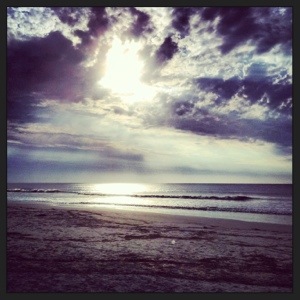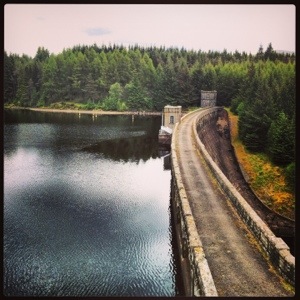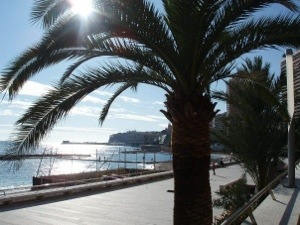I had the good fortune to spend 4 days in Oslo. This city reminds me of Zürich and Geneva in that it doesn’t really have the energy or distinct architecture that London, Paris, Rome or Amsterdam has. And while I found the city to be kind of “blah”, the city sightseeing tour and museums were actually pretty interesting.
A few interesting facts about Oslo:
1. It was established on 1 January 1838. Founded around 1048 by King Harald III, the city was largely destroyed by fire in 1624. The city was moved during the reign of King Christian IV. It was rebuilt closer to Akershus Castle, and renamed Christiania in his honour (also spelled Kristiania in the late 1800s). In 1925, twenty years after the dissolution of personal union between Norway and Sweden, the city reclaimed its original Norwegian name, Oslo. (source Wikipedia)
2. This city rich. And I am not kidding (a regular pizza & Diet Coke from a chain called Pepe’s Pizza cost me $50 USD! I wanted apply for Norwegian food stamps so I could eat.). In 2009, Oslo was rated as the most expensive city in the world (now it’s second only behind Tokyo). The guide on my tour said that they have a lot of oil (and continue to keep discovering more of it) which allows them to save money since they don’t have to import it from the Middle East. They ration the oil to avoid a shortage in the near future (they feel they have enough to last the city for approximately 75-150 years).
3. The main pedestrian street (Karl Johan Gate) and various sidewalks throughout the city are actually heated (which you can do when you are rich). The city uses hydro electricity which powers most of everything there.
4. The Vikings didn’t actually wear the hat with pointy horns (you know what I’m referring to). According to the tour guide, this was made up for a play and kind of just stuck.
5. Norwegians love al fresco dining…even in the winter. I was surprised to find that most restaurants had their outdoor seating sections open while there was still snow on the ground! And it was packed. Most restaurants provide blankets or furs to snuggle up in while you dine. We actually tried this one afternoon and while the air was brisk, it was actually pretty nice.

Nobel Peace Center (Oslo, Norway)
Nobel Peace Center
The Nobel Peace Center was opened in 2005 and is absolutely fascinating…and very humbling. As I viewed the exhibits, I realized the strength and courage these people had to face opposition and fight for something they believe in. I was humbled to remember that I take for granted the fact that I can voice my opinion, own a home and have my own career.
The Nobel Peace Prize was established by Alfred Nobel (who was Swedish) in his will. He gave no reason for this but some feel it was to assuage his guilt over being the inventor of dynamite. The Nobel Peace Center is divided into 3 main areas (1. Main Exhibits; 2. Current Nobel Peace Prize Winners; 3. Former Nobel Peace Prize winners) with various other small areas.
Afghanistan Exhibit
The current exhibit is on Afghanistan and contains the soul-searing photos from Lynsey Addario and Tim Hetherington and short films by 3 brave teenage girls in Kabul (which you can view on the website).
“The British war photographer Tim Hetherington’s photo series Infidel provides a rare portrait of masculinity, camaraderie and vulnerability among American infantry soldiers. For nine months in 2007 Hetherington lived side by side soldiers at a base in the remote Korengal valley. Tim Hetherington was killed during a grenade attack in Libya in April 2011.” (quoted from The Nobel Peace Center website)


Notice the dog above has a collar made of bullets. There was also a short documentary film being shown of the soldiers in daily life. I’m not usually an emotional person but that film brought me to tears. It’s hard to understand what war is like if you have never served in the military. That glimpse into their lives broke my heart. The toughness they exude in the still photos (with all the tattoos and the obvious hazing) was countered by the fear during gunfire and the tears for fallen comrades. I highly recommend you check it out.

“The American photographer Lynsey Addario’s photo series Veiled Rebellion is an intimate and personal portrait of women’s lives in a patriarchal society. Addario has photographed women in Afghanistan for 11 years.” (quoted from The Nobel Peace Center website)
Her photos captured everyday living (from the birth of a child to the autopsy of someone who recently died). There were scenes of happiness from a typical wedding and the sadness of living in poverty. But there was a theme of hope. You could see the women getting stronger and happier as the years went on and they gained more freedoms.

“Anders Sømme Hammer and Christoffer Næss work with three girls in Kabul who want to change their society. Using hand-held cameras, the girls document their lives in the Kabul Cards video documentaries.” (quote from The Nobel Peace Center)
These videos were so touching. There were several videos of the 3 girls doing every day activities (shopping, trying on make-up, interviewing other teens). It really gives you insight into the culture and mindset in Kabul.
SHEROES
From there, you can walk upstairs to the SHEROES Nobel Peace Prize laureate exhibition 2011. The exhibition provides you with the biographies of the 3 brave heroines and laureates: Ellen Johnson Sirleaf and Leymah Gbowee from Liberia and Tawakkol Karman from Yemen. I saw Leymah Gbowee on The Daily Show with Jon Stewart a few months ago and was absolutely mesmerized by her. She is smart, funny and completely engaging. And, she was able to convey the enormous effort it took to gain women certain freedoms in Liberia. The one thought that kept running through my mind was that these 3 women were courageous and not easily intimidated by more powerful men. That takes a lot of faith and strength. It’s amazing how you can be inspired by the contributions of others.

Past Nobel Peace Prize Winners
I have to say, I was so excited to see this room. It is so cool…dark with ambient lighting. Very peaceful. As you can see in the picture at the left, each Nobel Peace Laureate is featured on a small tablet with their name, year of being the recipient (and reason why) and their speech. I did find it interesting that Yasser Arafat received a Nobel Peace Prize but Ghandi didn’t. Really? But my favorites are Martin Luther King, Jr., Mother Theresa, President Barack Obama and Nelson Mandela. Amazing!



The Viking Ship Museum
This small museum houses 3 unearthed Viking Ships and I found the history fascinating. I didn’t realize that the Viking burial ceremony was similar to the Egyptians. Their belief was that the dead needed food and drink (2 oxen were killed and dough was supplied), weapons, animals, clothes and their ships (basically everything they owned) in the afterlife. Horses and dogs (even a peacock) were killed and buried with the dead (including bridle mounts). I’m not sure if the dead had access to Cuisinart products to cook up the meat and bake the dough.
There were also tapestries (which I was not allowed to take pictures of) that had scenes of Viking life and burial. It looked very similar to Egyptian hieroglyphics! Another detail I was unaware of is that the Vikings owned slaves (but not from Africa).
All of this information was obtained when 2 Viking Ships were excavated. The Oseberg burial mound, which contained numerous grave goods and two female human skeletons (two women…one, aged 60–70, suffered badly from arthritis and other maladies; the second was aged 25–30. It is not clear which one was the more important in life or whether one was sacrificed to accompany the other in death). The ship’s interment into its burial mound dates from 834, but parts of the ship date from around 800, and the ship itself is thought to be older. It was excavated by Norwegian archaeologist Haakon Shetelig and Swedish archaeologist Gabriel Gustafson in 1904-1905. This ship is widely celebrated and has been called one of the finest finds to have survived the Viking Age (source Wikipedia).


Then there is the Gokstad ship. Shortly after the 1880 New Year the sons of the owner of Gokstad Farm, having heard of the legends surrounding the site, uncovered the bow of a boat and its painter while digging in the still frozen ground (source Wikipedia).


Holmenkollen Ski Jump
You can’t go to Oslo in the winter without checking out the Holmenkollen Ski Jump. It just so happens that the FIS World Cup occurred the weekend I was there. The ski jump is 60 meters/197 feet high!
This is a popular place for not only ski jumping but regular skiing as well. I decided to try the ski jump simulator and after 4 terrifying minutes, realized that I would never try it in real life. I’ve never been one to be afraid of heights and love rollercoasters but this was where I drew the line. Imagine looking down 197 feet (and I don’t even know how they get to the top of the jump). The amazing thing is that you speed down the course then fly off the end (as the jump) and stay airborne for a while before trying to land on skis. I would be dead with 2 broken legs.



Vigela nd Sculpture Park
nd Sculpture Park
Vigeland Sculpture Park covers 80 acres and features 212 bronze and granite sculptures all designed by Gustav Vigeland. 58 of the park’s sculptures reside along the Bridge, a 100 metre (328 ft) long, 15 metre (49 ft) wide connection between the Main Gate and the Fountain. All are clad in bronze and contribute to the Human Condition theme of the park. Here visitors will find one of the park’s more popular statues, Angry Boy (Sinnataggen). Visitors could enjoy the sculptures while most of the park was still under construction. At the end of the bridge lies the Children’s Playground, a collaboration of eight bronze statues, all in the likenesses of children at play.
The Fountain (Fontenen) was fabricated from bronze and adorned with 60 individual bronze reliefs. Portraying children and skeletons in the arms of giant trees, the Fountain suggests that from death comes new life. On the ground surrounding the Fountain lies an 1800 square meter mosaic laid in black and white granite. It took Vigeland a great deal of time to establish the monument: from 1906 to 1947.

The Main Gate to Vigeland Sculpture Park is forged of granite and wrought iron and serve as an entrance to Frogner Park itself (source Wikipedia).

The Monolith Plateau is a platform made of steps that houses the Monolith totem itself. 36 figure groups reside on the elevation bringing with them the “circle of life” message. Access to the Plateau is made via eight figural gates forged in wrought iron. The gates were designed between 1933 and 1937 and erected shortly after Vigeland died in 1943 (source Wikipedia).






Notice how the lake is half frozen!

This dog is carrying his own leash. I have to figure out how to get my dog to do this.
Other sites around Oslo

National Theater



Aker Brygg

Oslo fjord

City Hall
Hopefully this gives you a pretty good overview of Oslo.
Looking for a hotel in Oslo? Check out my review of the Thon Hotel Astoria here.








































































